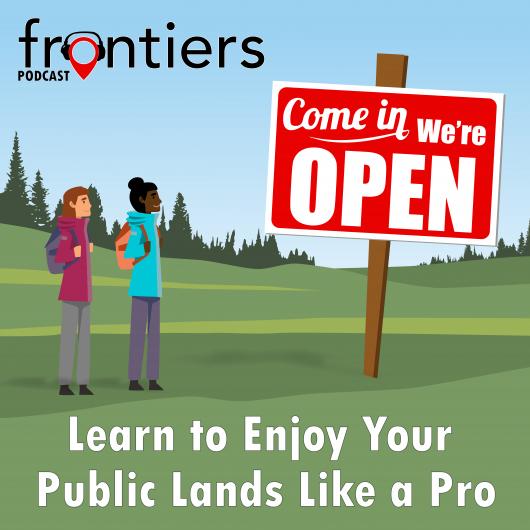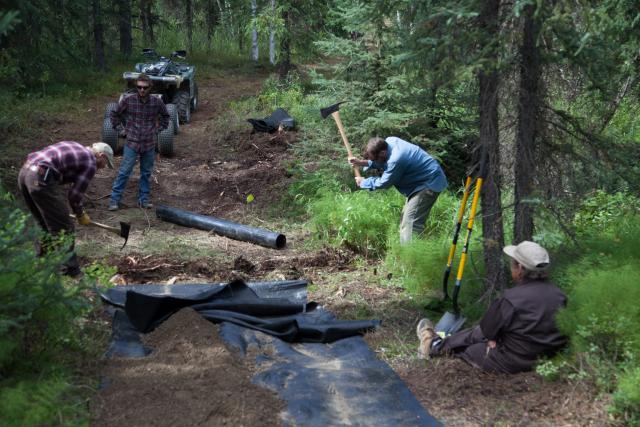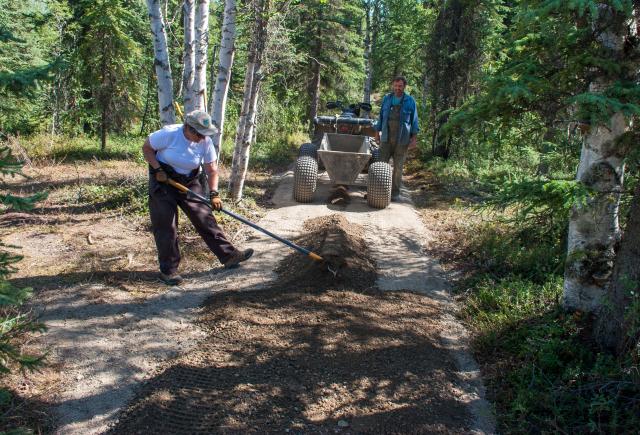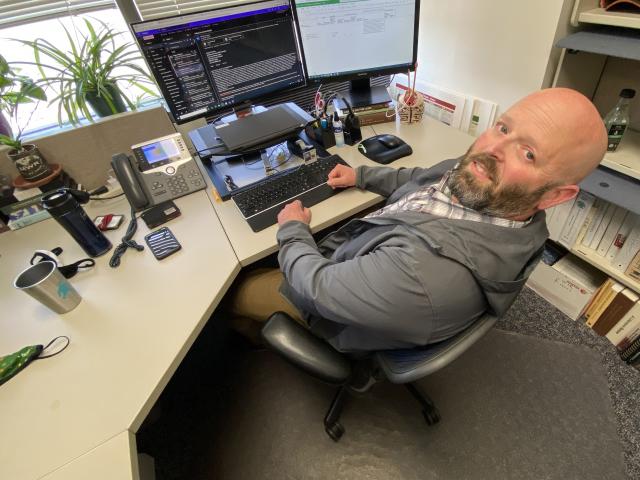You are viewing ARCHIVED content published online before January 20, 2025. Please note that this content is NOT UPDATED, and links may not work. Additionally, any previously issued diversity, equity, inclusion or gender-related guidance on this webpage should be considered rescinded. For current information, visit https://www.blm.gov/blog.
Podcast: Learn to Enjoy Your Public Lands Like a Pro

Transcript
[Jim Hart]: Welcome to the BLM Alaska Frontiers podcast. I'm Jim Hart. It's a common theme nationwide as record numbers of people get out to enjoy their public lands, lots and lots of people are resulting in lots and lots of wear and tear. Fewer public lands volunteers in Alaska due to covid concerns and travel restrictions, and lots of folks using public lands for the first time, not knowing the important role they play in keeping things open and available, can amplify the effects of the already increased demands. Zach Million is the recreation program lead with BLM Alaska, and his job is to make sure Alaska's public lands are accessible and ready for the public to enjoy.
Zach, thanks for joining us.
[Zach Million]: Oh, for sure. Thank you for having me.
[Jim Hart]: How many people visited BLM-managed public lands in Alaska in 2020?

[Zach Million]: Quite a few. Last year we had a little over one million visits, both from within state and internationally.
[Jim Hart]: That's a lot of people. How do you keep up with the facilities and the trash?
[Zach Million]: Sure, Jim, that's a great question. Well, we have a remarkable staff, first of all, and they really work hard and find innovative ways to solve problems and continue to have these sites open and ready for the public's use.
[Jim Hart]: So how many sites do you guys maintain?

[Zach Million]: Well, you know, our developed recreation sites, we have approximately 16 campgrounds throughout the state, multiple waysides, multiple restroom facilities, public-use cabins, trailheads, and designated trails in addition to rivers and river access points.
So there's quite a bit to consider for the staff's year-round management.
[Jim Hart]: It seems like having a million visits would leave an indelible mark on the landscape. How are public lands standing up to the traffic?
[Zach Million]: Well, all in all, really well. We're seeing a few cases of overuse at some of our dispersed recreation sites. We're really working with the public to try to educate them on the proper procedures to ensure that we protect these lands and keep everything as clean as possible.
[Jim Hart]: And what are some of the most important things users can do to help keep the lands in good shape and accessible and available for use?

[Zach Million]: Sure, that's a great question. So just remember that those public lands are their public lands, and if they can do things like try to stay on existing trails where possible, if you're out on your OHV, try to minimize disturbance as best as you can, and find a valid dump station for your RV. And remember that a vault wayside is not a proper location to dump your waste tank from your recreational vehicle. Things like that really help us manage the land and keep it open and clean for the public.
[Jim Hart]: And what kind of damage happens when people take vehicles off the designated trails?
[Zach Million]: Well, in this ecosystem we have here in Alaska, you know, with Tundra, a lot of moist landscapes, soils that are susceptible to issues from off highway vehicles or anything with weight.
Some of the things that can occur are ruts, pooling of water, muddy trails. For the motorized designated trails, recreation staff work really hard to harden them or armor them with rock substrate to ensure that they function properly and have proper drainages.
[Jim Hart]: And hardened trails caused quite a bit of money to maintain, you know, all that gravel and such. Which brings us to the next thing, which is fees. Where do the camping usage fees go, I mean, aren't these things paid for by taxes?
[Zach Million]: It's a good question, Jim. Taxes do go for a portion of operational expenses and staff. Labor fees or recreation fees in particular are only charged at sites where there's an expanded amenity offered things like potable water, trash service, although there are trash services that a lot of free locations throughout BLM Alaska as well. But those go to directly enhance and support expanded recreational opportunities for the public.
[Jim Hart]: You just did a massive update to your website. What are people going to find there?
[Zach Million]: A lot of great information. You'll find information ranging from the statewide recreation brochure [to] links to all of our sites for the visit pages. You'll find information which can help you plan your visit, and you'll also find locations where you can get geospatial maps which provide you with real-time information to help you get out and find those locations out on BLM-Alaska managed public lands.
[Jim Hart]: So, given all the work you and your team have put in, are you excited for the season?
[Zach Million]: Incredibly excited. You know, each spring and summer, as you know, here in Alaska is a is a complete change of pace from the winter. Winters are great, but the summers are amazing here. We've got a lot of new opportunities, some new staff on board, and we're excited to continue to offer these really high-quality recreational opportunities for the public.
So, yeah, looking forward to it.
[Jim Hart]: Well, thanks so much, Zach. You guys are really busy, so I won't keep you any longer. I really appreciate your time.
[Zach Million]: Hey, thank you, Jim. I hope you have a great summer.
[Jim Hart]: That's it for this Frontier's podcast. Be sure to check out the BLM Alaska Web site and click on the Recreation Activities Link. There you'll find everything you need to know about recreating on BLM manage public lands in Alaska. Remember, if you pack it in, please pack it out, that simple deed helps Zack and his team a great deal. The Frontiers podcast is a production of the BLM Alaska Office of Communications.

James Hart, Public Affairs Specialist
Related Stories
- Popular posts: BLM's most viewed blogs of 2025
- Take a First Day Hike on Your Public Lands
- Using science to uncover mysteries of the Mesa archaeological site in Alaska
- Historic Umtanum Suspension Bridge wins international footbridge award
- Agua Fria National Monument: A desert oasis with a rich history and a vital present
Office
222 W 7th Avenue #13
Anchorage, AK 99513
United States
